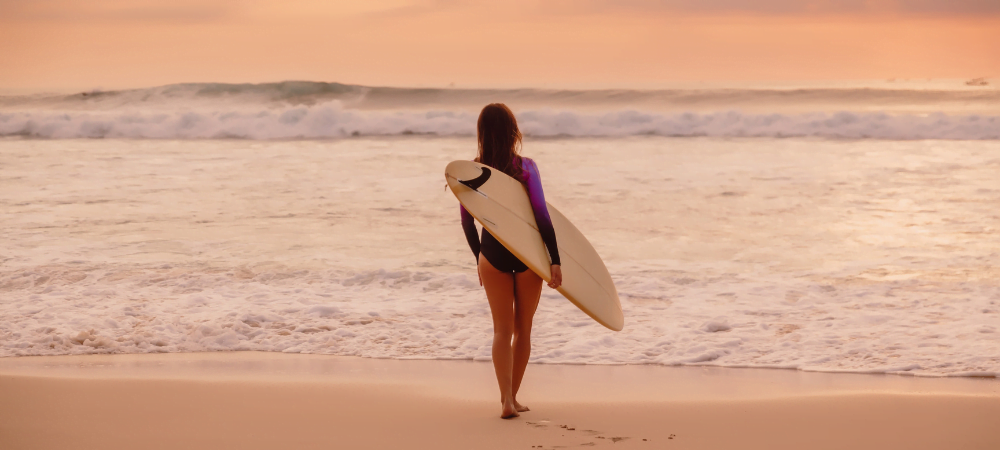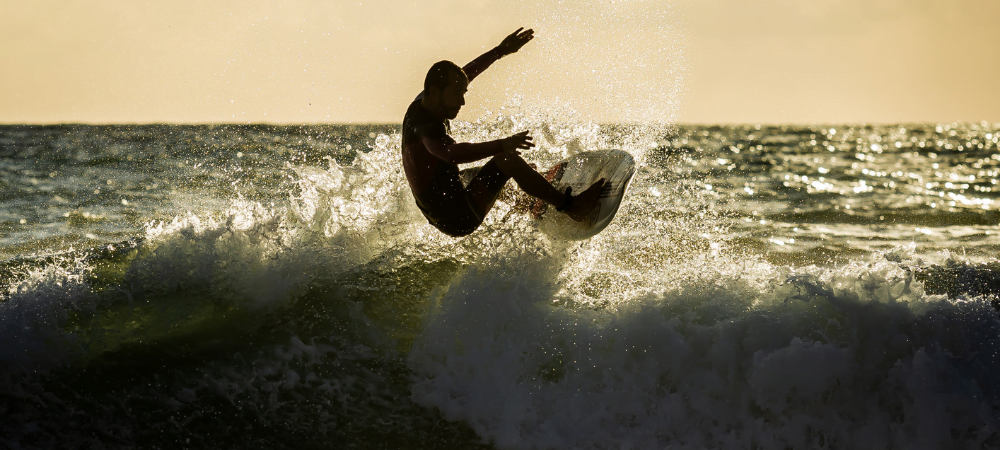Surfing Bali: A Surf Guide for Beginners & Experienced Surfers
Surfing in Bali is a bucket-list experience for beginners and pros alike. With warm tropical waters, world-class waves, and surf-friendly beaches on every coast, Bali offers something for every skill level. From beginner surf schools in Seminyak and Kuta to legendary breaks like Uluwatu and Padang Padang, this guide covers everything you need to know for an unforgettable surf trip.
If you are a beginner or here with family members who can use some practice, some of the best schools to learn surfing are located in Seminyak Beach, within walking distance from My Villas in Bali.
Key Takeaways
Bali offers consistent surf conditions year-round, with beaches for all skill levels
Best beginner surf spots include Kuta Beach, Seminyak Beach, and Legian Beach
Experienced surfers should head to Uluwatu or Padang Padang for powerful swells
Dry season (April–October) offers the best waves and surf conditions
Bring reef-safe sunscreen, proper gear, and rent boards locally if needed
Many surf schools are located in Seminyak, ideal for first-timers
Check local surf forecasts and beach flags to stay safe in the water
Early mornings and evenings often provide the best surf with fewer crowds
Best Surf Beaches in Bali for Every Skill Level
Bali is a surfer’s paradise, offering something for everyone—from first-timers looking for soft breaks to experienced wave hunters chasing barrels. Here’s a breakdown of the best Bali surf beaches by skill level.
Beginner-Friendly Surf Spots
Kuta Beach
One of the most popular choices for beginners. Gentle rolling waves, soft sand, and plenty of surf schools make it ideal for learning. You’ll find equipment rentals, instructors, and a vibrant beachfront atmosphere.
Seminyak Beach
Just north of Kuta, Seminyak offers slightly more challenging waves while still being beginner-friendly. It’s less crowded than Kuta and has excellent local surf schools.
Legian Beach
A nice middle ground between Kuta and Seminyak in both location and wave size. It’s perfect for beginners wanting to gradually improve without being overwhelmed.
Intermediate Surf Spots
Canggu Beach
Known for its fun reef breaks and relaxed surf scene, Canggu is great for intermediate surfers looking to level up. Expect mellow vibes, solid lefts and rights, and a cool café scene post-surf.
Balangan Beach
This beach offers longer rides and more consistent waves—ideal for intermediates with some confidence in paddling and positioning. It’s less touristy than Kuta and Seminyak.
Advanced Surf Spots
Uluwatu
World-famous for its long, barreling lefts and epic cliffs. Uluwatu is a dream for experienced surfers but can be intimidating for beginners. Best during the dry season.
Padang Padang
Often called the “Balinese Pipeline,” Padang Padang is fast, shallow, and unforgiving. It’s one of the most iconic surf spots in the world—strictly for advanced surfers.
When Is the Best Time to Surf in Bali?
The island offers surfable waves all year, but the experience varies based on the season.
Dry Season (April to October)
This is the peak surf season on the west and south coasts. Waves are more consistent, winds are offshore, and you’ll find perfect barrels at Uluwatu, Canggu, and Kuta. It’s also the most crowded time of year.
Wet Season (November to March)
Less consistent, but also less crowded. The east coast becomes the go-to surf zone, with good waves at Sanur, Serangan, and Nusa Dua. Great if you want fewer people and are open to exploring.
Essential Surf Gear and What to Pack
Whether you’re renting or bringing your own, here’s what you’ll need:
Surfboard: Soft-top for beginners, performance shortboard or fish for advanced surfers
Leash: Always use one to keep your board attached
Rash guard or wetsuit top: Sun and rash protection is essential
Reef booties: Especially helpful on reef breaks like Uluwatu
Reef-safe sunscreen: High SPF, water-resistant
Towel and water bottle: Stay dry and hydrated
Most beaches have surf shops and rental shacks nearby if you forget something.
How To Choose The Right Surfboard
Choosing the right surfboard is an essential part of preparing for a day of surfing and can make all the difference when it comes to having an enjoyable experience. It’s important to choose a board that matches your skill level, size, and style.
When selecting a surfboard, consider its width, length, thickness, volume, rocker profile, and fin setup. A wider board helps you stay stable on small waves and can help keep you afloat with bigger waves.
For beginners, longer boards are typically easier to ride. The thickness will affect your paddle speed, while volume influences the buoyancy of your board. The rocker profile affects how easily the board turns in the water, while fins provide drive and stability as you maneuver across the wave.
Take some time to research different types of boards or ask experienced surfers for advice before making a purchase. Most shops have demo boards available, so you can try them out in the water first-hand before committing to a purchase. Picking out the right board will ensure you have more fun in the water and progress faster as a surfer!
Preparing For The Waves
When it comes to surfing in Bali, preparation is key. Knowing what kind of waves you’ll be facing and how to handle them can help you stay safe and have a great time. In this section, we’ll go over what you need to do before tackling the waves.
First of all, take some time to research the area you’re planning on surfing in. Check out the type of waves that are common in that area, as well as the best times of day for surfing there. Doing this can give you an idea of what to expect when you get in the water – whether it’s big and choppy or small and gentle – so you can be prepared for whatever comes your way.
Make sure you have all the necessary gear with you before heading out. Bring a board suited to your skill level, a wetsuit if it’s cold outside, sun protection, and any other items that will help keep you safe while riding the waves. Once everything’s packed up and ready to go, it’s time to hit the beach!
Surfing is an exciting activity that takes some practice but can be incredibly rewarding once mastered. With proper preparation, there’s no limit to where your newfound skills could take you – so don’t forget to enjoy yourself along the way!
Safety Tips For Surfing In Bali
While the waves may be tempting, it’s essential to take the necessary steps to ensure your time in the water remains safe. Let’s explore some of these safety tips.
When you’re on the beach, keep an eye out for any warning signs or flags that may be posted on the beach. These signal potential dangers such as strong currents, riptides, and other hazardous conditions. Make sure you understand what each flag means so you can stay aware of your surroundings and make informed decisions about when it’s safe to go into the water.
Don’t forget about wearing proper equipment when you’re out surfing! Investing in a good quality wet suit and leash will keep you insulated against colder temperatures and help you stay afloat if you get knocked off your board by a wave. It’s also smart to bring along a buoy or life vest if conditions could become hazardous while you’re in the water.
Staying mindful of these safety tips will help ensure that your experience surfing in Bali is enjoyable and without any unfortunate incidents. Taking just a few extra precautions can make all the difference!
FAQ
When is the best time of year to surf in Bali?
The best time to surf in Bali is during the dry season (April to October) when the west and south coasts offer consistent swells and offshore winds. Popular spots like Uluwatu, Kuta, and Canggu are ideal during this time. The wet season (November to March) shifts the action to the east coast, where places like Nusa Dua and Sanur can be great with fewer crowds.
Which Bali beaches are best for beginner surfers?
Top beginner surf beaches in Bali include Kuta Beach, Seminyak Beach, and Legian Beach. These spots offer smaller, forgiving waves and have plenty of surf schools and instructors for first-timers.
What are the best surf spots in Bali for advanced surfers?
If you’re an experienced surfer looking for a challenge, head to Uluwatu, Padang Padang, or Keramas. These breaks offer fast, powerful waves and are known for their consistent barrels—ideal for confident surfers.
Do I need to bring my own surfboard to Bali?
No, you don’t need to bring your own board. Bali has a huge number of rental shops and surf schools where you can rent boards of all types—soft tops, shortboards, longboards, and more. Most rental spots are near the beaches, and many also provide rash guards and leashes.
Are there surf schools in Seminyak?
Yes, Seminyak is home to several reputable surf schools, especially along Double Six Beach and near the central Seminyak beachfront. They offer beginner lessons, board rentals, and surf guiding for all levels.
Is Bali a good destination for learning to surf?
Absolutely. With warm waters, a variety of wave types, and experienced instructors, Bali is one of the best places in the world for learning to surf. Beginners will find welcoming surf communities and gentle waves on the west coast, especially near Kuta and Seminyak.
- Welcome Back To My Villas in Bali - November 17, 2021





